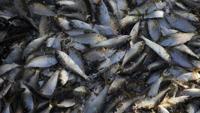VIRGINIA - Consideration of a proposed Virginia bill that would fund a study of menhaden in the Chesapeake Bay has been pushed to at least next year.
According to the Chesapeake Bay Foundation, House Bill 19 would have enabled a wide scale study of menhaden populations in the Bay that would shed light on the overall health of the fish species. The bill was first introduced in the Virginia House of Delegates by Delegate R. Lee Ware in December of 2023 and called for a three-year study on the ecology, fishery impacts, and economic importance of the Atlantic menhaden population in Virginia’s waters.
Yesterday, January 29th, a subcommittee within Virginia’s House of Delegates Committee on Rules recommended continuing the bill to 2025.
The National Oceanic and Atmospheric Administration (NOAA) Fisheries says Atlantic menhaden are a food source for striped bass and other fish, as well as raptors such as eagles and ospreys. The fish also serve an important role in commercial fishery and are harvested for use as fertilizer, animal feed, and fishery bait for blue crabs and lobsters, according to NOAA.
“Anglers, conservationists and scientists have long been concerned that the scale of the fishery concentrated in the Chesapeake Bay could lead to a lack of sufficient menhaden, causing ripple effects throughout the food chain for commercially and recreationally important species such as striped bass, bluefish, and weakfish,” the Chesapeake Bay Foundation said in response to HB 19’s delay to 2025.
The Chesapeake Bay Foundation says the Chesapeake Bay’s population has been suffering and fewer fish survive into adulthood. Annual fishing limits, according to CBF, are currently based on coastwide populations extending from the Carolinas to New England. CBF says more local data is vitally needed to accurately and specifically assess the health of the populations in Virginia and the Chesapeake Bay.




